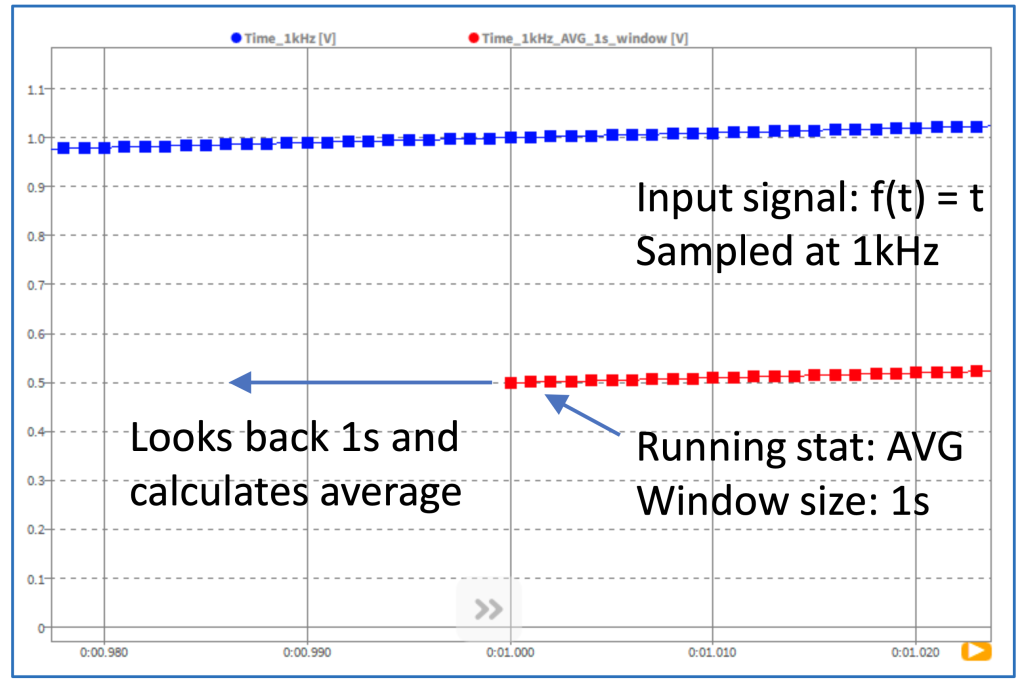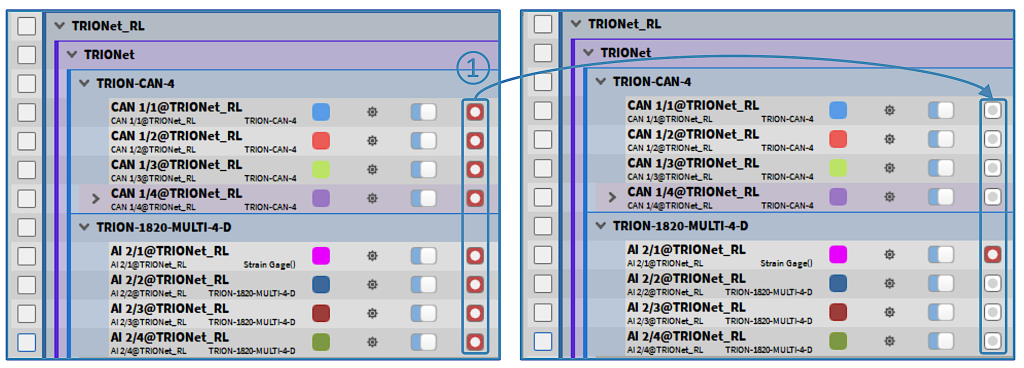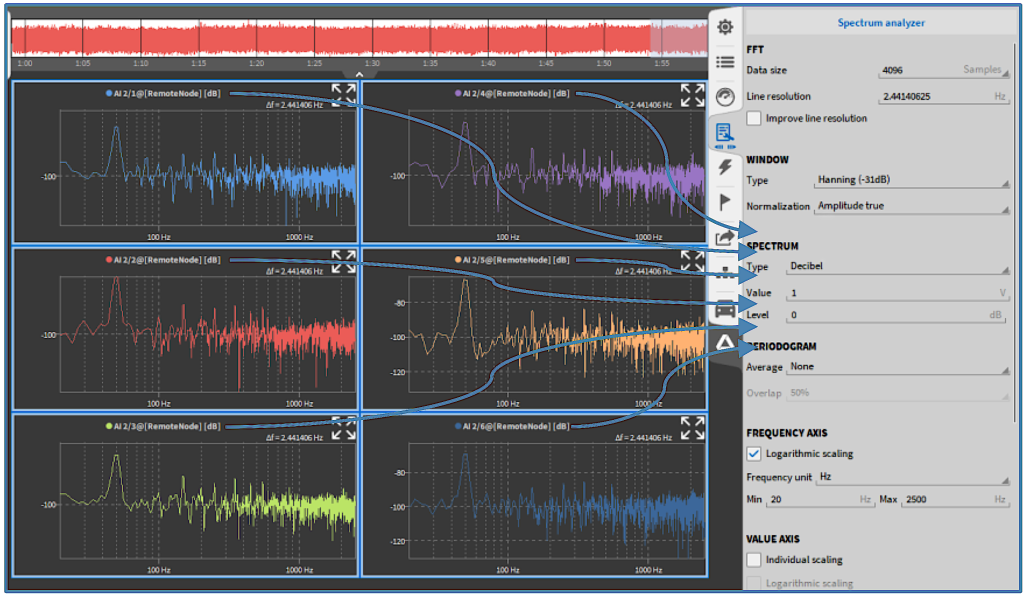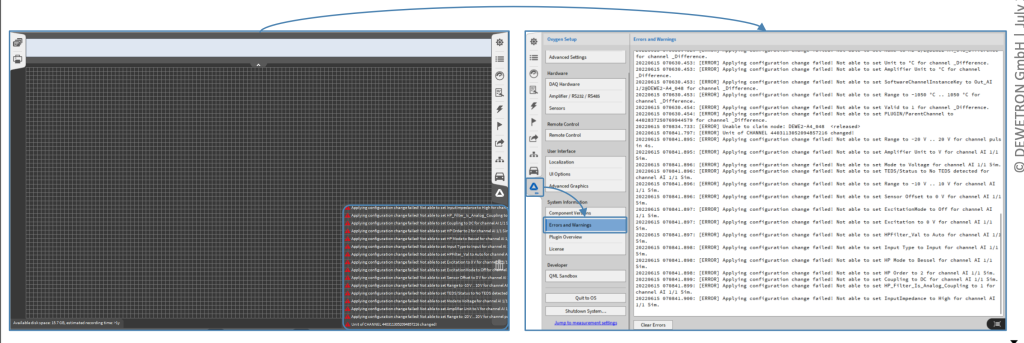OXYGEN 6.2 – An improved experience all around

With versions OXYGEN 6.0 and OXYGEN 6.1 we have significantly expanded the functionality of our popular data acquisition software. But now it is time for detailed improvements. Even if this may sound boring at first glance, the new OXYGEN 6.2 will improve the user experience in many areas.
In the following sections we want to introduce you to some of the new features of OXYGEN 6.2. But if you do not want to lose time, you might as well download OXYGEN 6.2 directly here:
New Features
- Additional statistics options
- More extensive options for special file formats
- A new export format
- CPAD decoder and other hardware settings
- Other new features
Additional statistics options
One of the most frequently used functions in OXYGEN are the statistics options. Already in OXYGEN 6.1 we enabled the calculation of additional parameters like variance or crest factor. But with OXYGEN 6.2 it is now also possible to set triggers and to use running statistics.
The new trigger function allows you to start statistical calculations when a trigger event occurs. Of course, you can also use a trigger event to terminate a statistical calculation. OXYGEN additionally offers you the possibility to stop calculations not with a trigger, but after a time specified by you.
Running statistics are often used to smooth highly fluctuating data. With the new running statistics function, the calculation of moving averages and other characteristic values is possible directly in OXYGEN. To do this, simply select a look back window. For this time window, the statistical value selected by you will now be continuously averaged.

Running average in OXYGEN 6.2
More extensive options for special file formats
The handling of file formats is the essential feature of any DAQ software. In OXYGEN 6.2 we have therefore put a special focus on extended options for reading and exporting data.
Thus, from now on it is possible to use *.csv files also in PLAY mode. The PLAY mode is aimed primarily at the offline analysis of data. But it is not just possible to import *.csv data. When importing, there are now also some advanced options available. For example, you can set the first column of the *.csv file as absolute or relative time. However, you can also simply set an individual sample rate instead.
Another new feature applies to *.dmd files. When saving measurement data, you can now exclude channels that should not be saved. This is especially useful if you are working with large data sets and there is not enough storage space available.

Exclude channels from export
A new export format
A distinguishing feature of OXYGEN is the number of export formats, of which there are now 14 different ones. For every conceivable third-party software OXYGEN has the right export format. With OXYGEN 6.2 we extend the number of export formats to 15 by adding the *.NetCDF file format.
*.NetCDF is a format that can efficiently handle scientific data. Especially in the fields of atmospheric science and oceanography this format is used extensively. In OXYGEN 6.2 you now have the choice between the following formats:
- NetCDF3
- NetCDF4/HDF5
- NetCDF5
In addition to the introduction of *.NetCDF, we also have improvements the export of *.txt, *.csv, and *.xlsx files. The new export option “align to trigger” sets the zero point of your time series to the trigger event. All measurements that took place before the trigger event are listed with a negative time index.

Align exported data to a trigger event
CPAD decoder and other hardware settings
DEWETRON’s CPAD modules combine analog signal conditioning and an A/D converter with a robust chassis. In OXYGEN 6.2 we have improved the integration of the CPAD modules. New features include:
- Support for XR modules
- You can now edit the CAN ID/address
- OXYGEN 6.2 also allows editing of the CAN ID type (extended, standard)
- Export of CPAD/XR configurations as *.dbc file is now possible
Furthermore, there is now the possibility to edit the properties of devices of the same type all at once. So, you do not have to make changes for each device individually, one click is enough to apply the changes to all devices.

Edit multiple devices at once
Other new features
OXYGEN 6.2 offers a number of other new features that improve the user experience. For example, the error log list has been revised. Previously, errors and warnings were always placed in the lower right corner. From now on, there is a separate tab for error messages, which significantly improves the overview.

The new error log
Other features that OXYGEN 6.2 offers are new header options, FFT averaging for math channels and more possibilities for XY plots. The Enum Sclaing introduced in OXYGEN 6.1 is also extended in our new update. Enum Scaling is now possible in connection with formulas created in the OXYGEN formula editor.
OXYGEN 6.2 also includes other minor improvements and a number of bug fixes. The best way to learn about the new features is to try out our intuitive measurement software yourself. In this regard, you will find even more information about the functionality of OXYGEN in our OXYGEN online help.
More about DEWETRON
Are you looking for a measuring system that adapts perfectly to your needs? Then you have found the right partner. Whether in the automotive industry, aircraft industry or the energy sector – our measuring systems are suitable for every application. With their modular design, our DEWE(3) systems also offer you the possibility of flexibly adapting the feature set afterwards.
Our OXYGEN measuring software is not less flexible. With its intuitive operation, suitable for both touch and mouse input, it fits into any workflow. With all this, OXYGEN still remains a competent DAQ software with a wide range of functions.
Have we raised your interest? Then follow us on Facebook, Twitter or LinkedIn. There you will always be informed when there are new blogposts, whitepapers or video tutorials.





